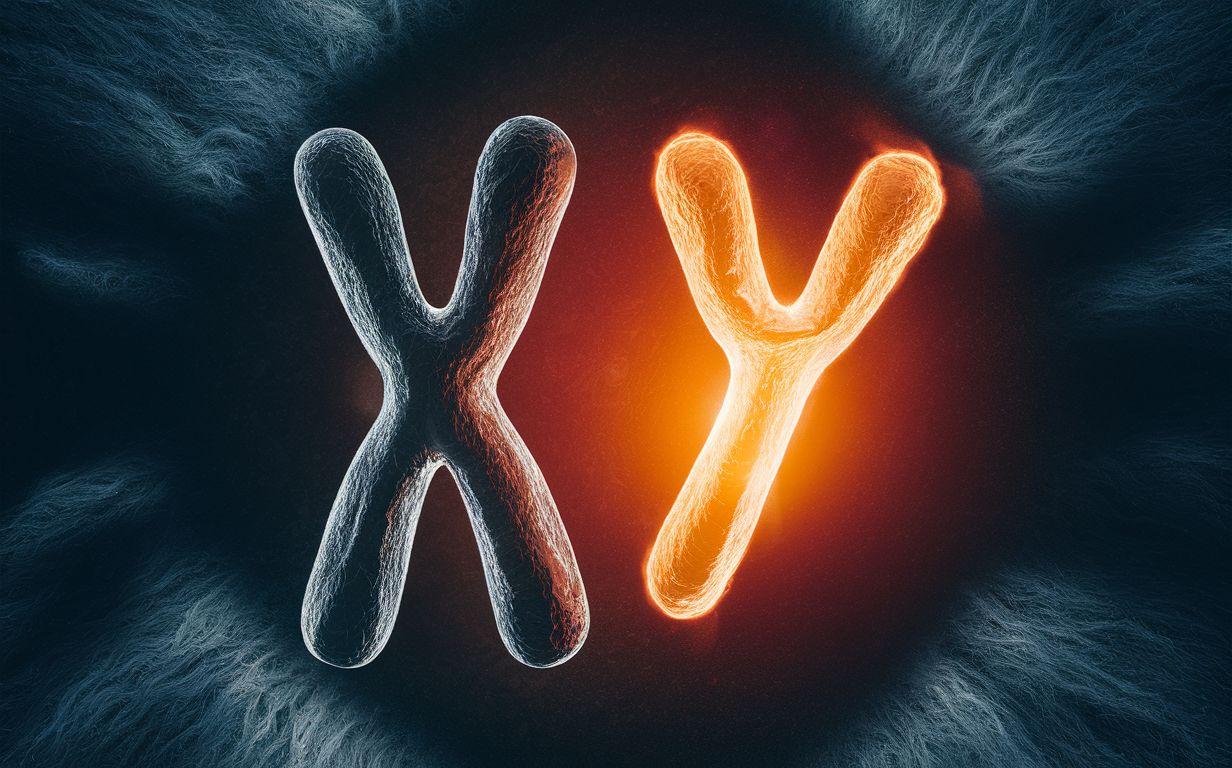Follow us on Google News (click on ☆)
Within a species, heterogametic individuals, i.e., those carrying two different sex chromosomes, XY males (most mammals) or ZW females (e.g., in birds), exhibit a shorter lifespan and lower survival rate than their homogametic counterparts (XX females or ZZ males).

However, it remains to be determined whether this toxic effect of heterogamety extends to other elements used to assess age-related effects, such as reproductive senescence.
In the African pygmy mouse Mus minutoides, females can carry three combinations of sex chromosomes (XX, XX*, and XY). We have shown that litter size at birth decreases significantly faster in heterogametic females naturally carrying a Y chromosome (X*Y) than in homogametic XX and X*X females with age.
These findings, published in the journal PNAS, suggest that the presence of the Y chromosome in these females affects reproductive senescence and highlights the strong interactions between sex chromosomes and aging.
In France, women live on average 85.6 years compared to 79.7 years for men. These longevity gaps between the sexes are commonly observed in mammals, where females (XX) have greater longevity than males (XY).
In birds, where females are ZW and males ZZ, the opposite has been documented, suggesting a role of sex chromosomes in aging. Indeed, in both groups, the heterogametic sex (XY or ZW) shows lower adult survival than the homogametic sex (XX or ZZ). Thus, as early as the beginning of the 20th century, a theory emerged that the heterogametic sex would be disadvantaged in terms of survival.
We tested this hypothesis using a unique biological model, the African pygmy mouse Mus minutoides. This species has an atypical sex determination system characterized by the presence of a third sex chromosome, X*, carrying an unknown mutation that blocks the "male" program initiated by the Y chromosome upstream. Thus, this species has males with an XY genotype and females with three genotypes: XX, X*X, and X*Y.
Through several years of breeding monitoring, our study revealed a general decline in reproductive performance with age in all female genotypes of this species. But surprisingly, litter size at birth decreases faster in heterogametic X*Y females than in homogametic XX and X*X females with age, which is characteristic of more pronounced reproductive senescence.
Indeed, X*Y females give birth to nearly one fewer pup per litter every 100 days compared to XX or X*X females (see figure). These results support the idea that carrying a pair of different sex chromosomes affects multiple aspects of aging processes, whether related to survival or reproduction.

Figure. Three mice side by side, representing the three distinct genotypes of females in this species.
In a related species, Mus triton, both males and females are X0, with males having lost the Y chromosome and females the second X. Taken together, these two species of African pygmy mice open new perspectives on our understanding of the genetic determinants of gender and the negative impact of heterogamy on the aging process.
Publication reference:
Lemaître, J., Voituron, Y., Herpe, L., & Veyrunes, F. (2024).
X*Y females exhibit steeper reproductive senescence in the African pygmy mouse.
Proceedings Of The National Academy Of Sciences.
Published on December 30, 2024.